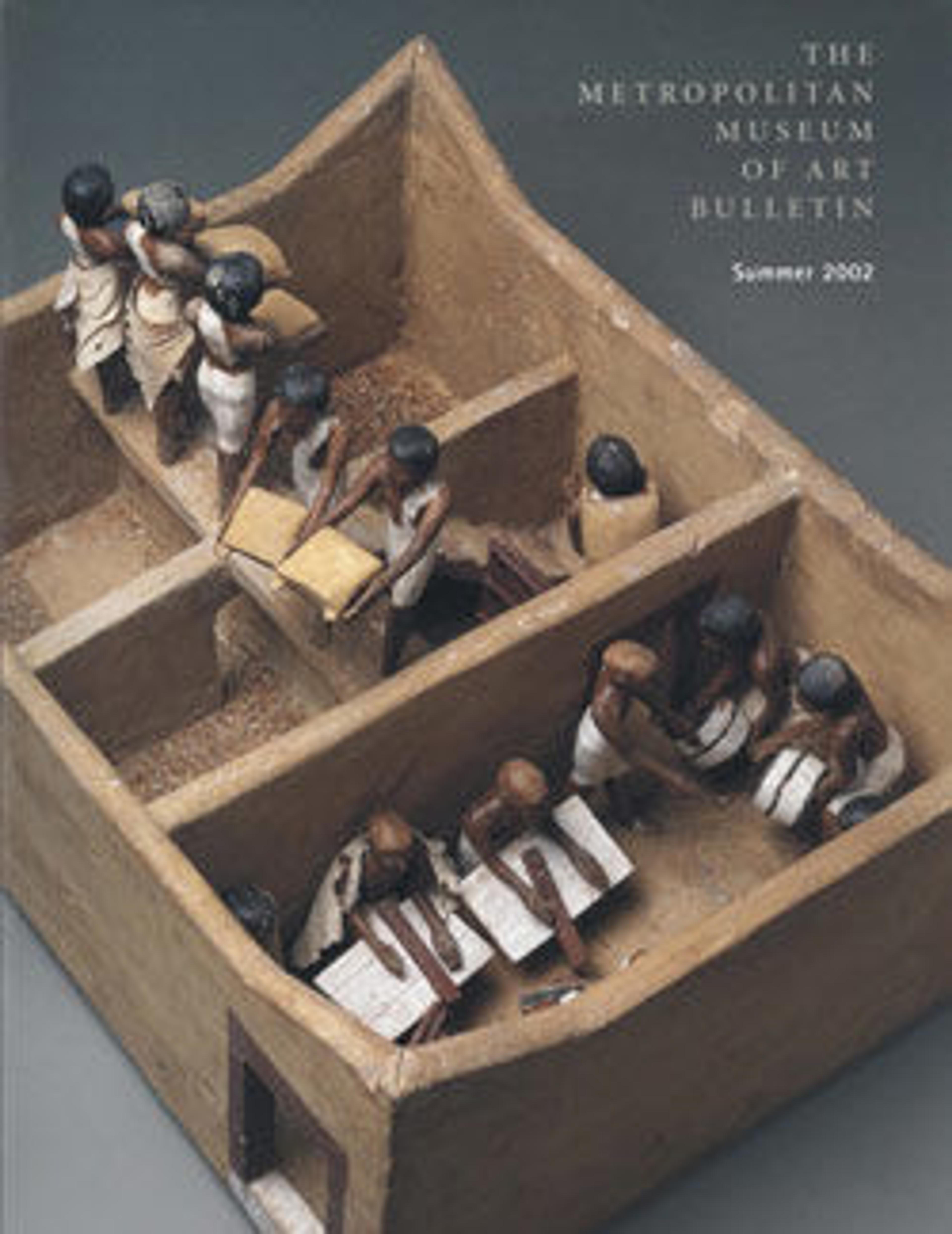Length of Very Sheer Linen Cloth
The earliest Egyptian funerary texts list linen cloth among the principal offerings for the deceased, and price lists indicate that the finest quality fabric was highly prized. The tomb of Hatnefer and Ramose contained a variety of linen sheets that came from the storehouses of Queen Hatshepsut, a funerary gift for the parents of Senenmut, one of her favorite courtiers.
This sheet was woven of superfine thread that must have been spun from flax harvested when the plants were very young. The length of cloth would have taken months of constant industry to weave. The upper left corner has a series of inlaid weaver's marks, and the right corner, a single cross. One end of the sheet has a warp selvage; the other is finished with a plied fringe; and one weft selvage is decorated with an inlaid fringe. This cloth must be that described by the Egyptians as "royal linen," the highest quality. The sheerness of the featherweight fabric and its silken softness lend credence to New Kingdom representations of elaborately pleated garments that allow the contours of the body and even the color of the skin to show through. The cloth was repaired and laundered in ancient times.
This sheet was woven of superfine thread that must have been spun from flax harvested when the plants were very young. The length of cloth would have taken months of constant industry to weave. The upper left corner has a series of inlaid weaver's marks, and the right corner, a single cross. One end of the sheet has a warp selvage; the other is finished with a plied fringe; and one weft selvage is decorated with an inlaid fringe. This cloth must be that described by the Egyptians as "royal linen," the highest quality. The sheerness of the featherweight fabric and its silken softness lend credence to New Kingdom representations of elaborately pleated garments that allow the contours of the body and even the color of the skin to show through. The cloth was repaired and laundered in ancient times.
Artwork Details
- Title:Length of Very Sheer Linen Cloth
- Period:New Kingdom
- Dynasty:Dynasty 18, early
- Reign:reign of Thutmose II–Early Joint reign
- Date:ca. 1492–1473 B.C.
- Geography:From Egypt, Upper Egypt, Thebes, Sheikh Abd el-Qurna, Tomb of Hatnefer and Ramose (below TT 71), location not recorded, MMA excavations, 1935–36
- Medium:Linen
- Dimensions:Greatest length 515 cm (202 3/4 in); greatest width 161 cm (63 3/8 in);
Weight 140 grams (5 oz.)
46 warp x 30 weft per sq. cm.
These measurements made by Nobuko Kajitani and recorded by Nobuko Kajitani - Credit Line:Rogers Fund, 1936
- Object Number:36.3.111
- Curatorial Department: Egyptian Art
More Artwork
Research Resources
The Met provides unparalleled resources for research and welcomes an international community of students and scholars. The Met's Open Access API is where creators and researchers can connect to the The Met collection. Open Access data and public domain images are available for unrestricted commercial and noncommercial use without permission or fee.
To request images under copyright and other restrictions, please use this Image Request form.
Feedback
We continue to research and examine historical and cultural context for objects in The Met collection. If you have comments or questions about this object record, please contact us using the form below. The Museum looks forward to receiving your comments.
